As your hair grows, thinning hair is one of the most common issues you’ll likely face. Many women find their hair roots to be a lot thicker while the hair at the top is very thin. So, if you’re worried and wondering, ‘Why is my hair too thick at the bottom? What should I do?’, read below to find the causes and what action you should take.
Why Is My Hair Thin on Top But Too Thick At The Bottom?
Your hair’s bottom can be way bulkier than the end due to one of the reasons below.
Nutritional Deficiency in Hair
Lack of iron, zinc, vitamins A, B6 & B12, C, and D3, biotins, and protein make your hair thin out. For example, iron deficiency causes dry hair that breaks under slight pressure. Likewise, an inadequate nutrient supply to your scalp and roots retards hair growth.
Extremely Dry Hair Ends

Dry hair ends usually signify underlying issues like lack of nourishment. Failure to treat the damage makes your ends brittle, frayed, and easy to break. With time, your roots and lower hair parts remain thick while the ends thin out.
Heat Damage
Heat styles temporarily break down the hydrogen bonds and change your hair’s shape. Heat also leads to rapid evaporation of moisture and leaves your hair dry.
Without enough moisture, your hair strands will look brittle and frizzy. Finally, excess heat damages the cuticle and reduces the protection the layer offers inner hair parts.
Over-Washing
When you overwash, you strip your follicles of natural oils. Also, frequent wash-ups, especially with hot water, open up the cuticle.
As a result, moisture quickly escapes, and your hair dries and tangles more easily. With time, your hair’s ends become dry, brittle, and full of split ends.
Over Processing
Permanent and semi-permanent dyes contain peroxide and ammonia. Ammonia swells and opens your hair cuticle to allow dyes to get inside the hair. Unfortunately, the change in integrity makes your hair more porous, weaker, and thinner.
Improper Use of Shampoo And Conditioner
Apply shampoo to the scalp, not the strands. Whereas you may have a buildup on the shafts, most of the shampoo will be on the scalp. Also, your hair ends are longer than the roots, so you need more conditioner for the ends.
When you apply conditioner, start at the bottom and work your way up as you add extra conditioner until you reach the ends.
Brushing and Combing Incorrectly
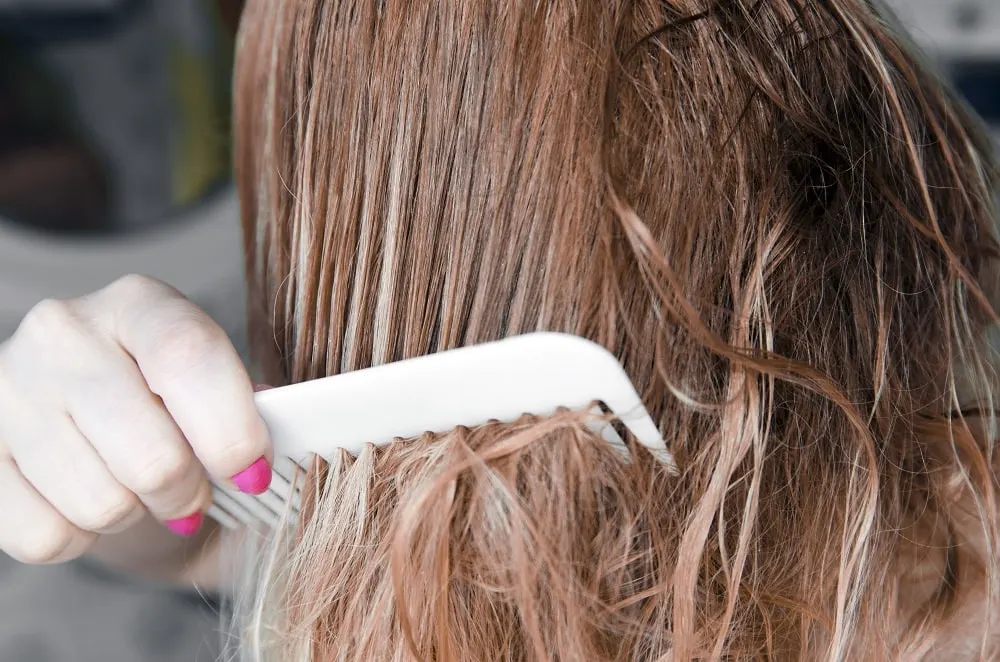
The tools and procedures you use to brush or comb can harm your hair in various ways. First, chipped or cracked combs can snag and pull your hair out.
Second, if you don’t clear tangles before you brush up the shaft, the knots can make you pull out your hair. Third, if you brush or comb incorrectly, you exert stress that worsens the rate at which your hair sheds.
Lack of Hair Trimming
You get rid of split ends when you trim your hair. But failure to cut gives more room for the split ends to spread further into the strand. As a result, your hair becomes brittle, dull, and more vulnerable to thinning.
How to Prevent Hair From Thinning at The Top
Uphold the best practices below to enhance the volume of your hair.
Healthy Diet
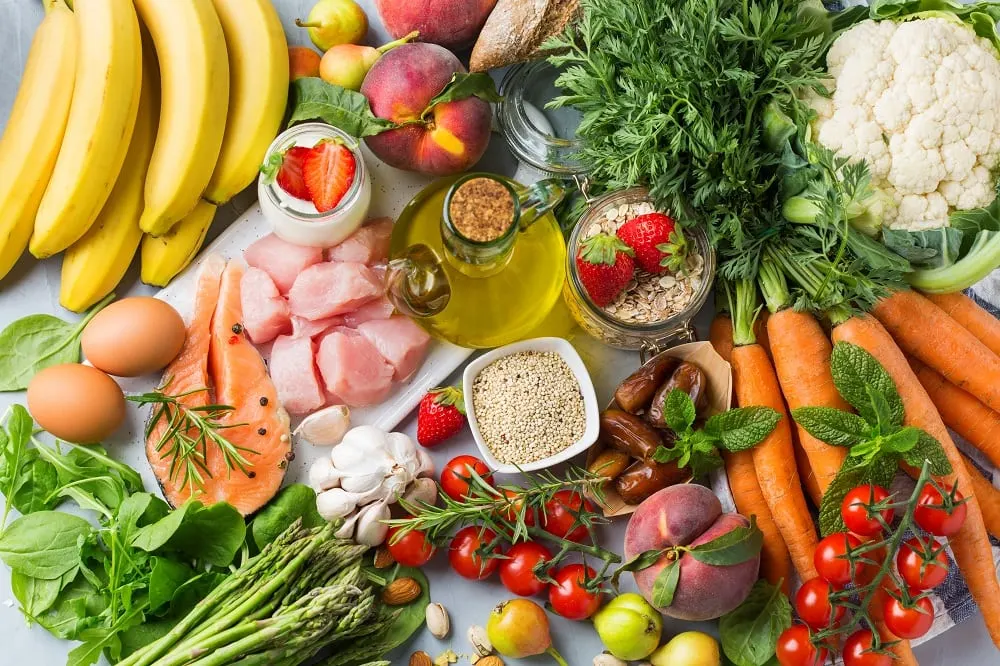
Your body needs nutrients to create new strands and maintain healthy hair follicles. A nutritious diet that contains proteins, healthy fats, and vitamins can thicken your thin hair. Some nutrient-rich food to include in your diet are:
- Dark green leafy vegetables for vitamin A
- Green, black, or other protein-rich beans
- Eggs provide iron, protein, and omega-3s
- Almonds, walnuts, and other nuts supply fatty acids
- Fish, pork, liver, and eggs for vitamin B6
- Broccoli, berries, citrus fruits, tomatoes, and sweet potatoes for vitamin C
- Whole grains, milk, and legumes provide zinc
Remember to take vitamin A and zinc in moderation because excessive consumption can cause hair loss.
Avoid Over Washing And Over Brushing Your Hair
You mustn’t necessarily wash your hair every day. Instead, wash two to three times a week to ensure you don’t strip your hair of necessary oils. If you have natural hair, which is usually drier, wash even less frequently.
Protect Hair From Heat Damage
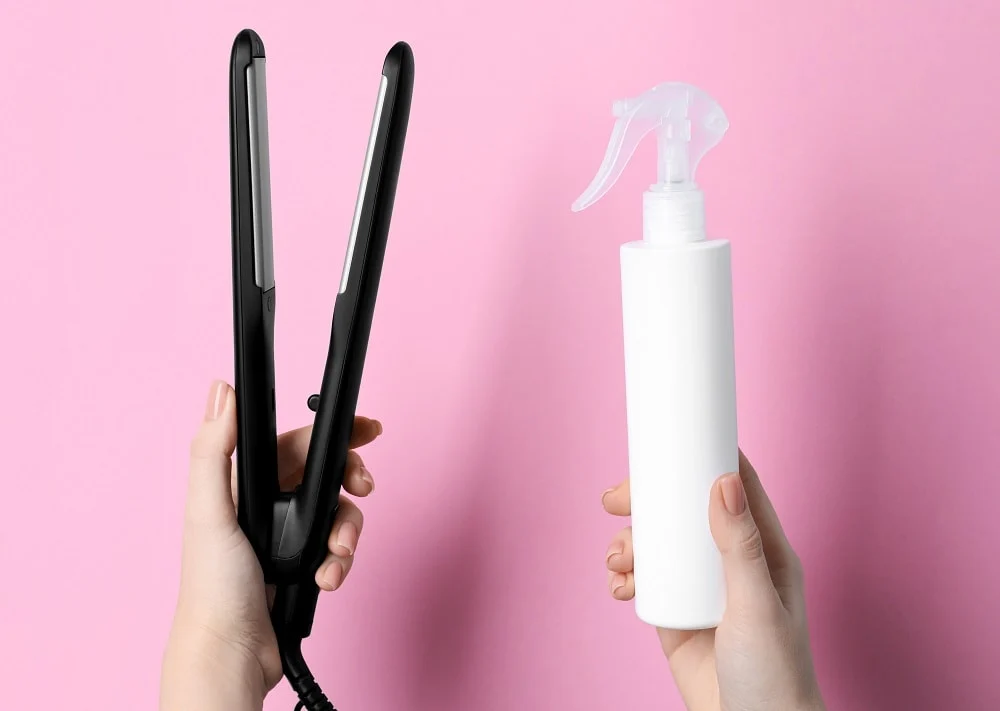
Follow the three tips below to protect your hair from heat damage:
Use a Heat Protector
Heat protectors coat your hair with water-soluble silicones. As a result, your cuticle becomes less vulnerable to heat damage, and your strands retain moisture.
Use Low Temperatures
Maintain 300 to 380 degrees for fine, medium, and colored hair and 400 degrees for coarse hair. If your heat tools don’t have temperature readings, invest in one that lets you read the degree of heat.
Limit Heat Styling
Heat style once a week if you have straight or curly hair. Reduce the frequency to once every two weeks if excess hair falls. If colored, you have already exposed your hair to strong chemicals, so stay off heat styling.
You reduce the risk of hair thinning if you stay mindful of heat styles.
Choose the Right Shampoo And Conditioner
Use shampoos without alcohol as an ingredient to avoid dryness. Consider shampoos and conditioners with beneficial and nourishing ingredients.
Such ingredients include histidine, niacin, Phyto-caffeine, minoxidil, keratin, and essential oils. The components above stimulate growth and strengthen your strands.
Massage Your Scalp To Increase Blood Flow
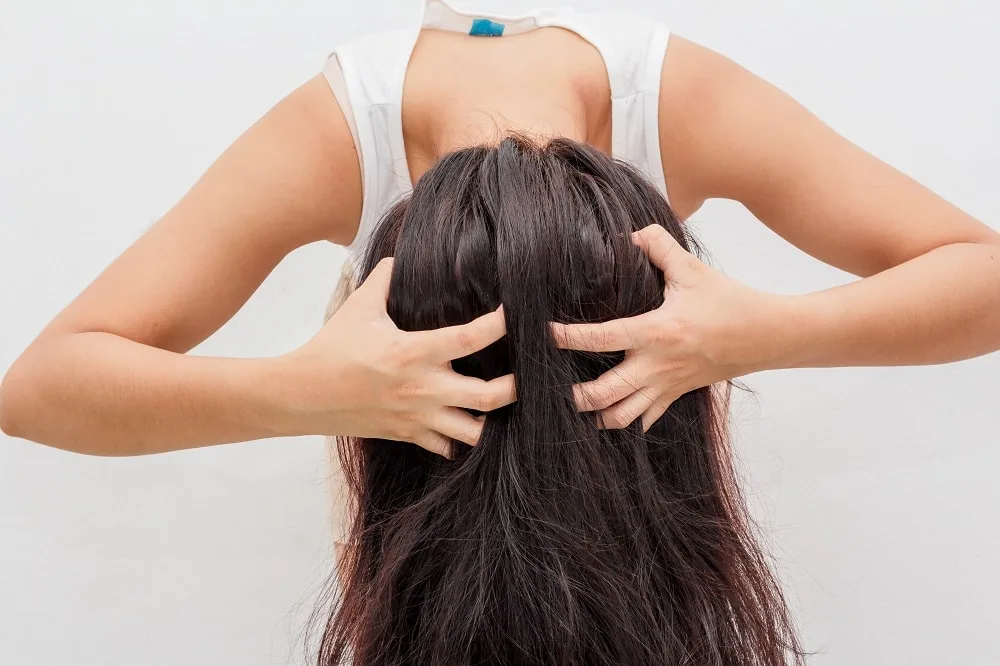
Scalp massages increase blood flow to your scalp. As a result, your hair roots become strong, and your hair’s natural oils become distributed evenly.
The massages also reduce emotional tension and improve sleep quality to promote healthy hair. You can massage your scalp with your fingers or use warmed-up oil to increase circulation further.
Limit the Use of Harsh Styling Product
Harsh chemicals found in some styling products make your hair dry and thin. So, avoid products with the following components:
Silicone
If you use silicone-based products, nutrients from conditioners won’t penetrate the shaft. Silicone also dries the hair from the inside and weakens the strands.
Alcohol
Mousses and styling spray gels are some typical hair styling products with alcohol. Unfortunately, alcohol zaps moisture from your hair and leaves the shafts dry.
Protein-Based Conditioners
Use a conditioner with moisture and protein instead of one with protein only. Excess protein makes your hair lose elasticity and be easier to snap when you comb or brush.
Strive to use styling products made with natural ingredients, e.g., argan oil, aloe vera, and shea butter
Get Regular Trims
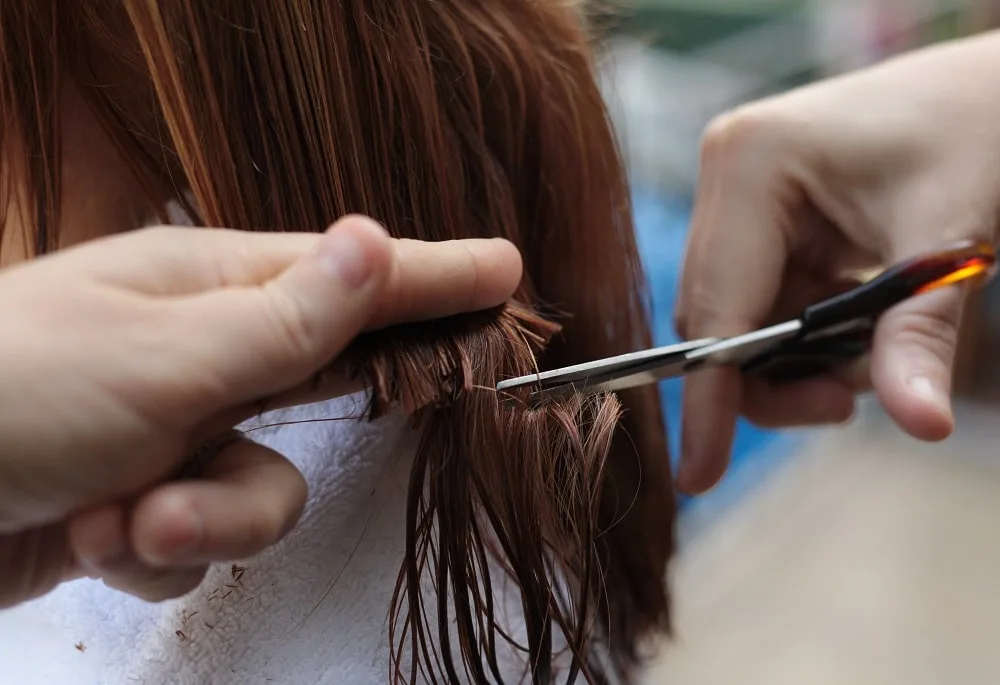
You have had your hair ends for many years, especially if your hair is long. So, the strands have been exposed to many different chemicals, elements, and manipulation.
With regular trims, you eliminate the fragile part to keep your hair ends thicker and healthier. Besides, your hair will look better and become easier to style.
Keep Your Hair Hydrated
You can’t hydrate your hair if you only drink water. Hair hydration happens in different forms and through various products.
For instance, you can use a hydrating shampoo to preserve your hair’s natural oils. You could also make a spritzer (a blend of rose water and aloe vera) to spray on your scalp.
How Can I Fix My Hair That Is Too Thick at the Bottom?
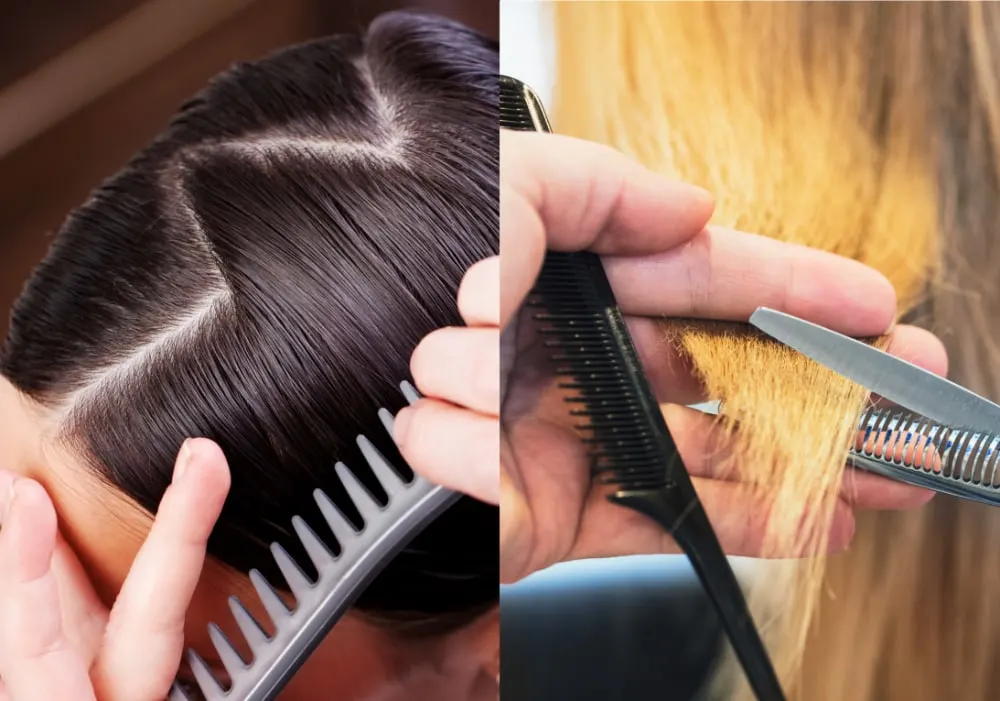
Below are two quick fixes to uneven hair volume.
Change Hair Part
If you wear the exact part for too long, you wear down your hair and cause breakage. But when you switch parts, you let your roots up and are free to breathe. You also reduce tension among your strands and give your hair room for more healthy growth.
Flat Iron Your Hair at the Bottom
Flat iron in layers from the bottom as you work up. Don’t run over the hair more than once. If you need to repeat a section, you likely have more extensive parts than necessary. So, part your hair into smaller areas to ensure you don’t redo a section.
Get a Hairstyle With Thinning Hair on Top
Your hairstylist can use thinning shears to thin your hair, reducing the hair volume at the bottom. Your hairstyle will remain in proper shape.
As discussed above, your hair is thick at the bottom but thin at the top due to inappropriate habits. For instance, you lack some nutrients, use excess heat or chemicals, or don’t trim your hair. So, eat healthily, reduce the heat, avoid harsh products, and you’ll be good to go.
